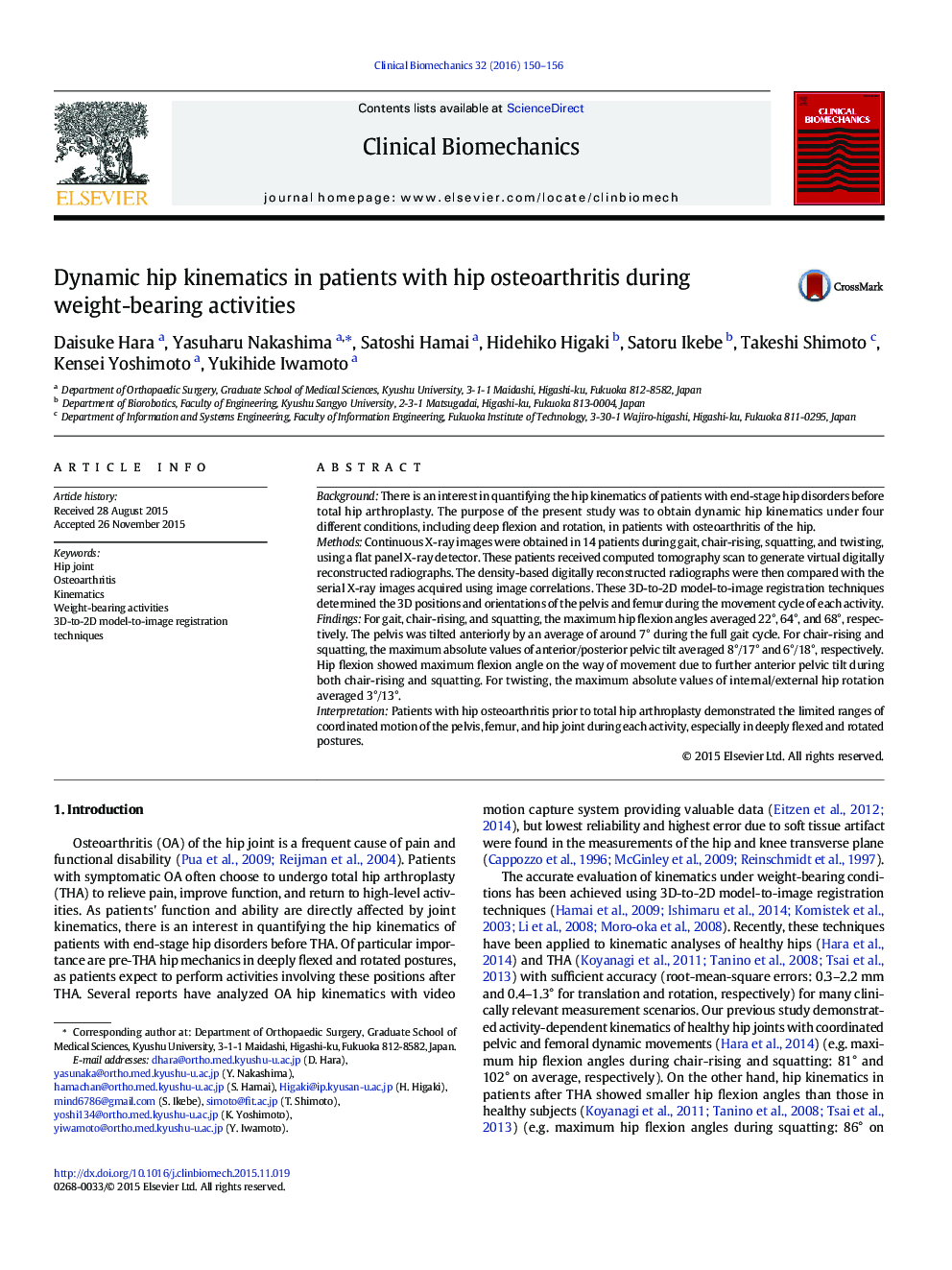| Article ID | Journal | Published Year | Pages | File Type |
|---|---|---|---|---|
| 6204626 | Clinical Biomechanics | 2016 | 7 Pages |
â¢We quantified kinematics of weight-bearing activities in hips with osteoarthritis.â¢Gait, chair-rising, squatting, and twisting were analyzed by image-matching method.â¢Limited ranges of coordinated motion of hip joint were observed in each activity.â¢Pelvic tilt compensated for limited range of hip motion in deeply flexed postures.â¢Internal rotation was more restricted than external rotation during twisting.
BackgroundThere is an interest in quantifying the hip kinematics of patients with end-stage hip disorders before total hip arthroplasty. The purpose of the present study was to obtain dynamic hip kinematics under four different conditions, including deep flexion and rotation, in patients with osteoarthritis of the hip.MethodsContinuous X-ray images were obtained in 14 patients during gait, chair-rising, squatting, and twisting, using a flat panel X-ray detector. These patients received computed tomography scan to generate virtual digitally reconstructed radiographs. The density-based digitally reconstructed radiographs were then compared with the serial X-ray images acquired using image correlations. These 3D-to-2D model-to-image registration techniques determined the 3D positions and orientations of the pelvis and femur during the movement cycle of each activity.FindingsFor gait, chair-rising, and squatting, the maximum hip flexion angles averaged 22°, 64°, and 68°, respectively. The pelvis was tilted anteriorly by an average of around 7° during the full gait cycle. For chair-rising and squatting, the maximum absolute values of anterior/posterior pelvic tilt averaged 8°/17° and 6°/18°, respectively. Hip flexion showed maximum flexion angle on the way of movement due to further anterior pelvic tilt during both chair-rising and squatting. For twisting, the maximum absolute values of internal/external hip rotation averaged 3°/13°.InterpretationPatients with hip osteoarthritis prior to total hip arthroplasty demonstrated the limited ranges of coordinated motion of the pelvis, femur, and hip joint during each activity, especially in deeply flexed and rotated postures.
